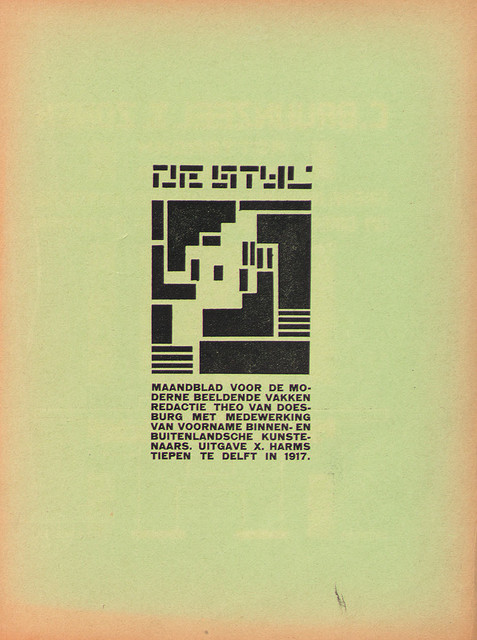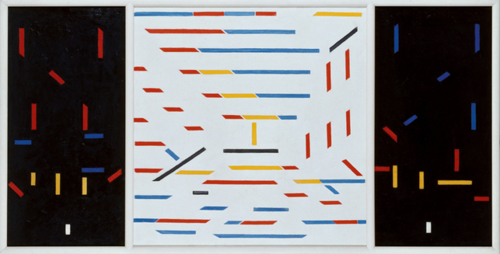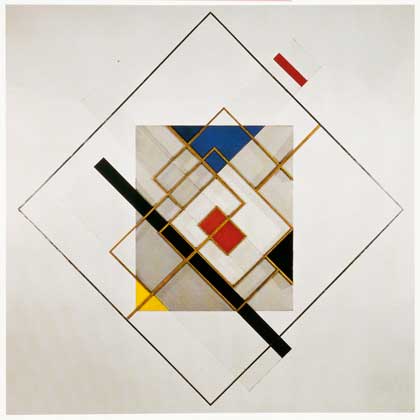Profile: De Stijl
De Stijl is also known as Neoplasticism or ‘Mondrian-style’ with people who don’t know much about art history.
De Stijl was founded in 1917 by Theo van Doesburg. De Stijl emerged from the first world war, so the Dutch artists (The Netherlands were neutral in WO I) didn’t have a lot of contact with foreign artists. De Stijl was a way for Dutch artists to get in touch with each other, because De Stijl wasn’t just a movement or style, it was also a magazine!
Cover of one of the first editions of De Stijl.
Neoplasticism means ‘new way to image something’. And that new way, is to reduce everything to straight lines, and primary colours. Pure abstraction. This is pretty radical for this time, because there was only Der Blaue Reiter, a substyle of Expressionism which made images of pure abstraction on canvas. De Stijl was an idea from the artists to bring back balance in the world, and to eradicate the horrible things there were going on in the world. De Stijl is a reaction to world war 1.
Our friend Mondrian was very dedicated to De Stijl, and he really lived up to the ‘rules’ of De Stijl. He believes in the balance of horizontal and vertical lines combined with primary colours, white, black and grey. To make his work more balanced and estethic, he put the golden section in a lot of his works. Some examples of Mondrian’s paintings:
Composition no. 12 or Composition with blue (1936-1942)
Composition with Red, Blue and Yellow (1937-1942)
Broadway Boogie Woogie (1942-1943)
Theo van Doesburg didn’t really live up that much to the ‘rules’ of De Stijl. He had no problems with some green and some diagonals, he even gave the name ”elementarism” to his more free paintings. Elementarism has the same principals as De Stijl though, you can call it a substyle. Take a look.
Counter-Composition with Disonances XVI (1925)
The Cow (1918)
Mondrian was so pissed at van Doesburg’s diagonals and his elementarism that he left De Stijl. That’s how dedicated he was.
There are a lot of other De Stijl artists though. On this picture you can see van Doesburg (right) and van Eesteren (left).
All those other painter’s had their own creativity and thoughts on De Stijl, which makes De Stijl so special. It goes back to the essence of art, and even with so many rules, the works are still so very different. That’s probably the thing that fascinates me the most about De Stijl. So many options, so much creativity and differences between artists.
Bart van der Leck – Composition no. 4 (1916)
César Domela – Neoplastic Relief no. 10 (1930)
And over the last 100 years, people still look up to De Stijl, though a lot of people only see the lines and the primary colours. But it’s so much more than that.
And to end this post, I would like to show you a serie of dresses from Yves Saint Laurent in 1965.











